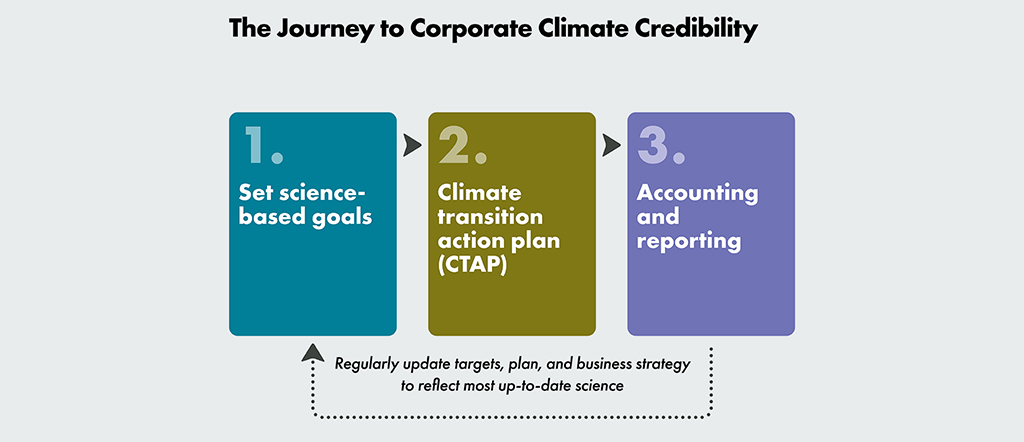Climate Transition Action Plans: Activate Your Journey to Climate Leadership
We Mean Business Coalition, CDP, Ceres, EDF
Climate transition action plans (CTAPs) detail the forward-looking, specific, and near-term actions a company is taking to cut emissions at pace and share this information in a non-technical, easily-digestible, and public-facing way.
They have emerged as a framework to equip corporate planning and share key details of those plans with companies’ stakeholders: investors, NGOs, governments, and the public.
To enable more companies to create credible climate transition action plans, We Mean Business Coalition, CDP, Ceres, and EDF worked with Ramboll Consulting to produce consolidated guidance on what a climate transition action plan should include, with actionable templates.
Download the guidance and editable templates:
- Climate Transition Action Plans: Activate your journey to climate leadership (pdf)
- Foundations for creating CTAPs: editable checklist (pdf)
- Create a CTAP: editable template (pdf)
- CTAP progress: editable template (pdf)
Why create a climate transition action plan?
CTAPs can address the need for clarity on how companies are moving from setting goals to taking near-term action to achieve those goals in line with a 1.5°C emissions reduction pathway. They are an important step on the journey to corporate climate credibility.
- Step one is to set ambitious of 1.5°C aligned near- and long-term science-based targets that include Scope 1, 2, and material Scope 3 emissions.
- Step two covers setting a CTAP and best to integrate this into business strategy and governance.
- Step three covers accountability which involves publicly disclosing results, dialogue with key stakeholders and adjusting the CTAP where necessary to meet future goals.

What should a Climate transition action plan include?
For this report, we analyzed the existing transition plan guidance landscape, consolidated this guidance and developed a consensus-driven definition of what a comprehensive CTAP should include. The four elements are:
- An emissions reduction plan across the value chain
- Integration into business strategy and governance
- Advocacy for public policy
- Focus on a just transition


